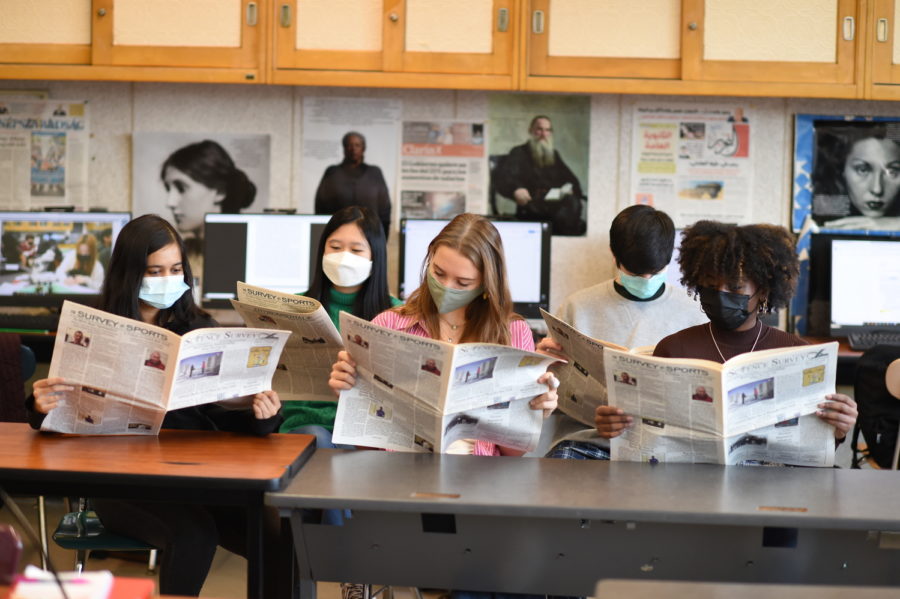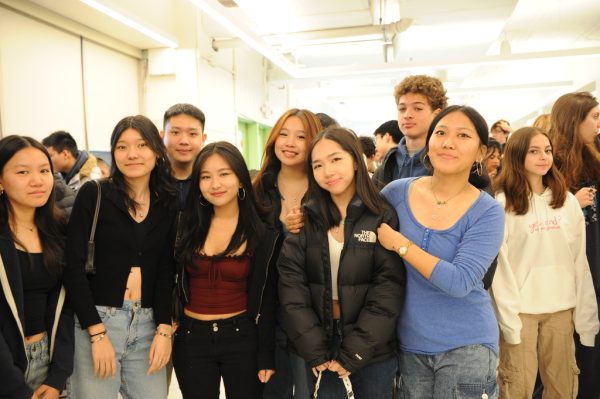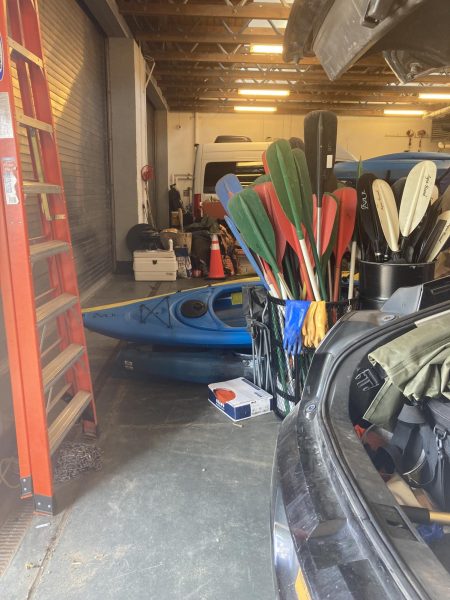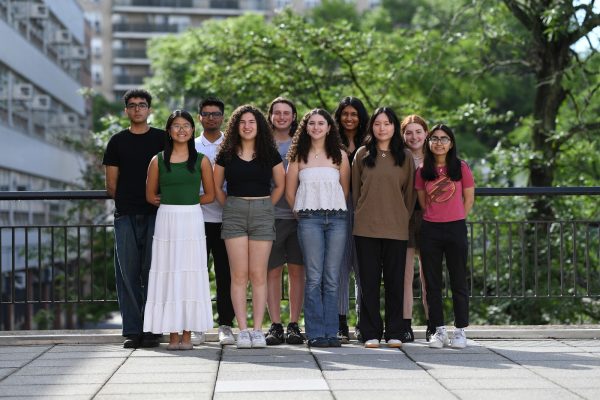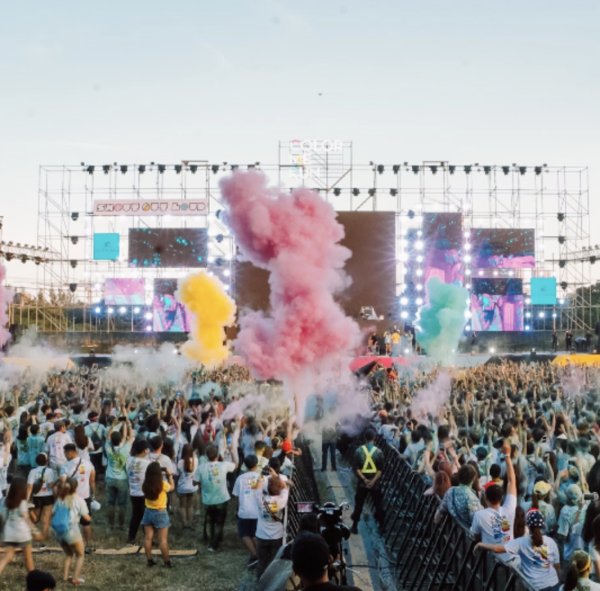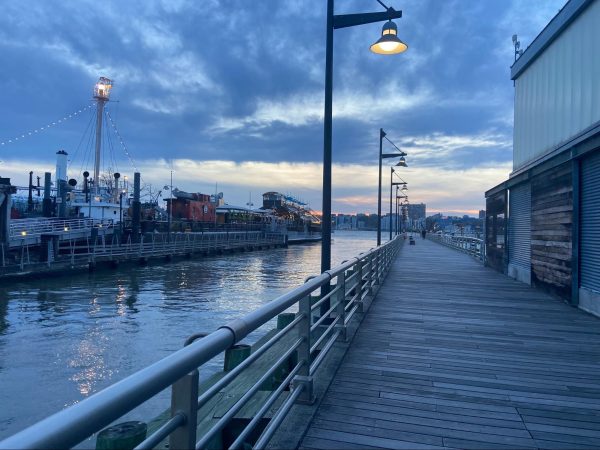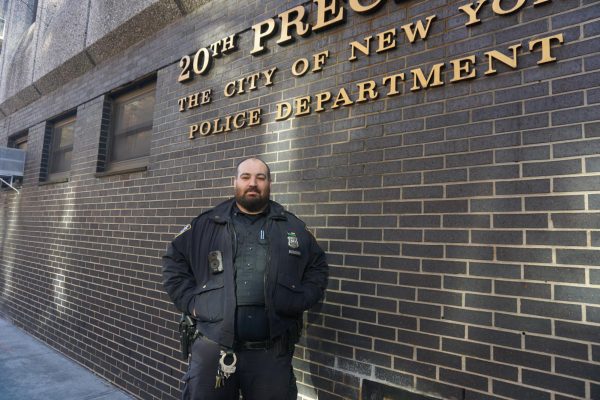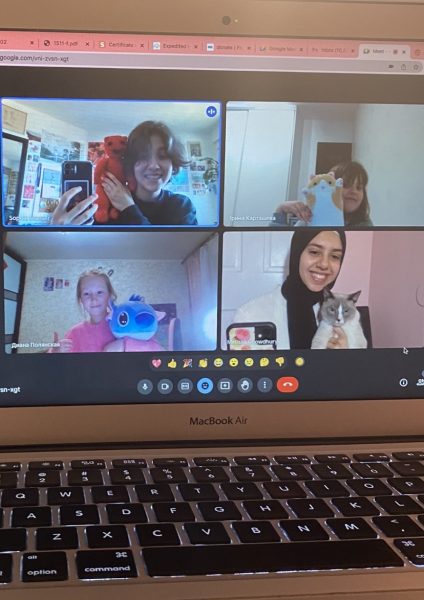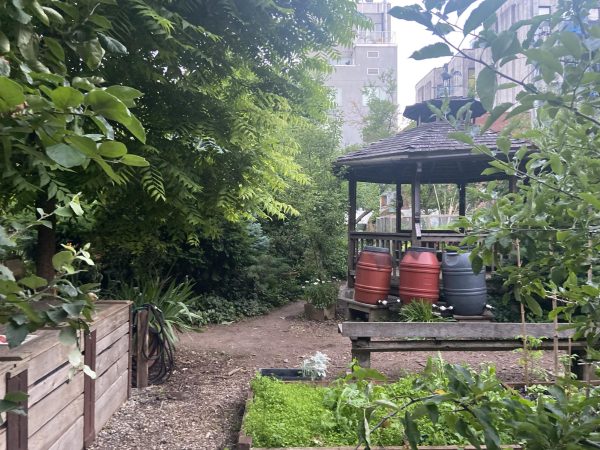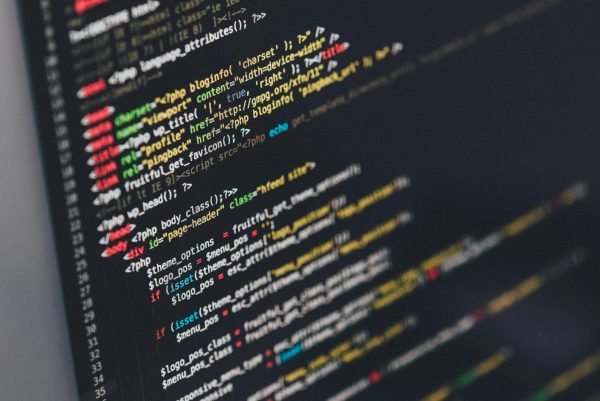Behind the Scenes at ‘The Science Survey’
Bronx Science’s entirely student written and edited newspaper, ‘The Science Survey,’ has amassed over 140,000 readers during this school year alone. The paper’s staff works extremely hard on every article and truly embodies the paper’s slogan “We’ve got the news down to a science.”
Science Survey staff members read an old issue of The Science Survey. The paper dates back to 1938 when Bronx Science was first established.
The sound of passionate typing and light chatter fills Room 214 as Mr. Thorp’s students work on their articles, honing their craft as journalists. The Journalism Workshop meets daily to work on the school’s award winning paper, The Science Survey. The newspaper publishes five issues each school year and each issue includes around 90-100 articles, all written by student Science Survey staff members. The Science Survey staff undergo a month and a half-long journalistic cycle for each issue, starting with brainstorming ideas, then researching and interviewing for the articles, then editing, and finally publishing.
Article brainstorming at The Science Survey is unique. For many other high school papers, students send in one idea or are given a topic to write about. At The Science Survey, each staff member submits five new ideas for their article per issue, after discussing their ideas with their peers, before they are assigned one of those ideas to write about.
While this process improves the quality of every Science Survey article, it also presents a challenge to the staff to think of five new and newsworthy ideas for every issue. Many students have found their own creative ways to come up with ideas. Arianne Browne ’22, an Editor-in-Chief, has her friends tell her random words that she uses to think of article ideas. Describing this process, Browne said, “They say ‘name’ and I can write about the psychology of names. They say ‘cloud’ and I write about pareidolia.”
Alternatively, Melanie Lin ’22, another Editor-in-Chief, brainstorms by asking a series of questions. She said, “I sit down and think to myself: What is so prominent and significant that it has come up in conversation several times in the past month? What have I been passionate about lately?” Brainstorming is the first step in creating a great issue of the paper.
While every staff member is encouraged to write for a different section of the paper every issue, some do have favorites. The Science Survey has six sections: Arts and Entertainment, Editorial, Features, News, Sports, and Spotlight. Writing for each section has its own challenges that reporters learn to navigate.
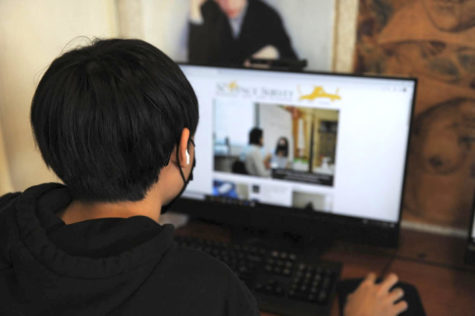
Once Mr. Thorp reads every staff member’s article brainstorming ideas and has designated each staff member a topic to write about, the staff begins researching for their articles and conducting interviews to get quotes. This is done by contacting experts, interviewing peers, doing online research, and sending out Google Forms to receive student opinions. Research and interviews are many staff members’ favorite part of the journalistic cycle. For instance, Grace Mao ’24, a Staff Reporter, said, “My favorite part of writing for the paper is conducting interviews with Bronx Science students who are passionate and care a lot about the topics I’m covering.”
Staff also commonly get the chance to interview relatively famous people in the fields of their articles. Lily Zuffal ’24, a Staff Reporter, got to interview Rana Abdelhamid, a candidate for District 12 of the House of Representatives. Additionally, Lin got to interview her favorite TikToker, @cafemaddy for one of her articles. She said, “the experience was surreal. I love that channel.”
Research and interviews are extremely important for developing articles. A good interview or statistic can greatly improve an article.
Once research and interviews are completed, the next step is for the staff to draft their articles. Then, three separate student editors edit each article – an editor for the section that the article belongs to, a copy editor, and an editor-in-chief. As the staff reaches their second and third years in the Journalism Workshop, they gain leadership positions as editors of the paper.
Being an editor is a special experience because staff who once looked up to their editors as role models when they first became staff get to guide new staff reporters on how to become better journalists. Mr. Thorp views student editing as one of the key factors that makes The Science Survey articles published to a high standard. He said, “I find student editing to be the most important part of The Science Survey’s cycle. The student editors are talented at their jobs and make the paper successful.”
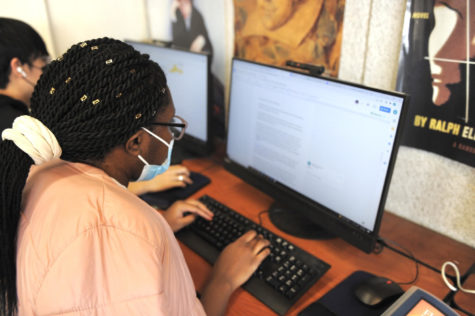
Student editors enjoy their jobs helping other students perfect their articles. Browne said she enjoys “helping others bring out their voices. Usually when I edit someone’s article, I’m asking them why something happened the way it did, to expand on it, to open up basically rather than just compiling facts.”
Editors must be strong, competent students, because while they edit several other articles, they also have to write their own articles to be edited. However, it is all worth it to share stories with our school community.
Throughout their time working on the paper, many editors have found that they have favorite sections in which to write. Browne, for the editorial section, wrote an article earlier this year titled “A Letter Home to Guyana.” The article covers the stories of the Caribbean people. Browne takes great pride in this article as she poured her soul into writing it. She said, “I hope younger generations of Bronx Science students can read the piece and relate it to themselves and know that their histories matter.”
While the Editorial section is a frequent favorite for staff, Arts and Entertainment is also popular. Arts and Entertainment Editor, Chanel Richardson ’22 said, “I think [Arts and Entertainment] gives students the freedom to write about more lighthearted and fun topics, but the section also allows for more structure.”
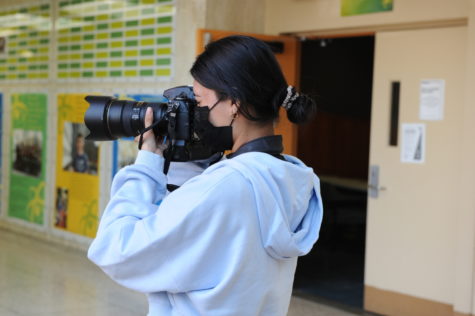
During the entire article drafting and editing process, it is also important that students find or take photos for their articles. One of the best parts of being on Science Survey staff is that every member contributes to the Bronx Science yearbook by taking photos. Staff members get to take photos of Bronx Science classes as well as school events and sports games. At the beginning of the year, the staff learn how to take photos using professional Nikon cameras.
Once the staff have finished researching, interviewing, drafting, editing, and finding photos for their articles, it is finally time for publication. Mr. Thorp proofreads every single article before publication on The Science Survey’s website, after students submit them for review online. Pre-pandemic, The Science Survey was also published in print, but last September 2021, the 89 Science Survey staff members voted overwhelmingly to only have The Science Survey online for environmental reasons and to reflect the fact that the vast majority of our readers are reading the newspaper online.
The Science Survey journalistic cycle creates great articles that students feel passionately about. Nicole Zhou ’22, a Copy Chief, said it best: “What I love most about writing for the paper is the fact that I can be as creative as possible, using all of the bounds of prose to express myself to an audience.”
Writing for The Science Survey is a special experience that allows students to improve their writing skills and get experience working on a professional newspaper. If you are interested, each year, you can join the Journalism Workshop by submitting a writing sample when Mr. Thorp opens applications around course selection time. If you meet minimum eligibility requirements, you will automatically receive an e-mail invite outlining the applications steps.
The future of The Science Survey is looking bright, with its online readership growing each year and students writing new interesting articles. As Richardson said, “There are so many phenomenal articles that don’t get enough attention, so it’s amazing to see student journalists get the recognition they deserve.”
Nicole Zhou ’22, a copy chief, said it best: “What I love most about writing for the paper is the fact that I can be as creative as possible, using all of the bounds of prose to express myself to an audience.”
Kate Hankin is an Editor-in-Chief for ‘The Science Survey.’ In her journalistic writing, Kate likes to share her interests such as food, music, current...

